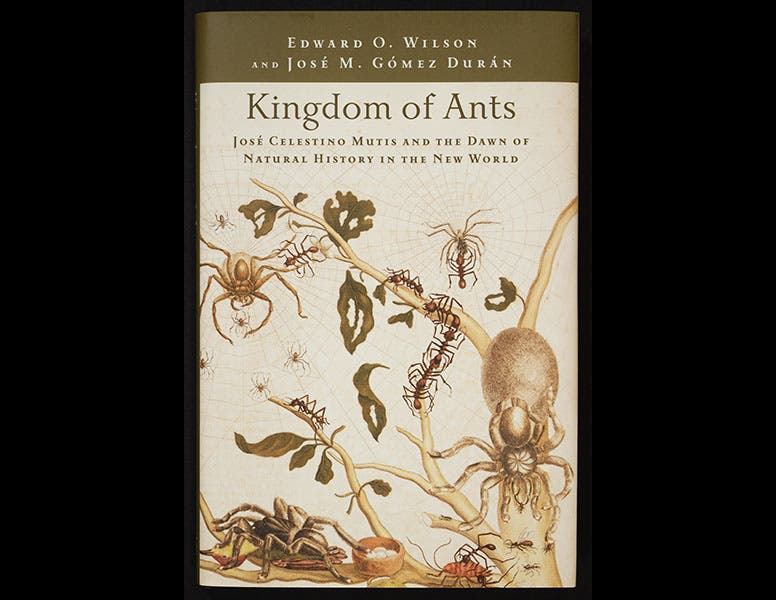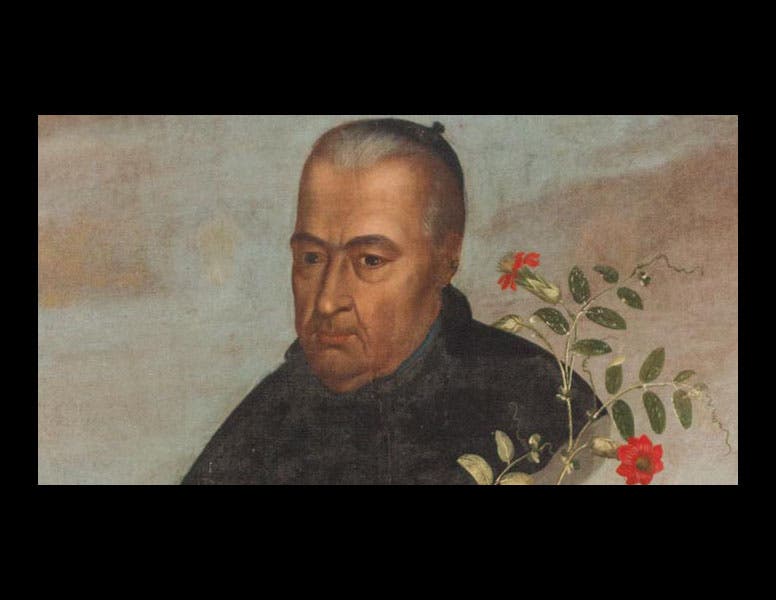Scientist of the Day - Jose Celestino Mutis

José Celestino Mutis, a Spanish naturalist, was born Apr. 6, 1732. In 1760, he went to what was then known as the New Kingdom of Granada in South America (comprising modern-day Columbia, Venezuela, and Panama), where he would remain for nearly 50 years. He implored the king to sponsor an expedition to study the natural history of the area, and his wish was finally granted in 1783, when the Royal Botanical Expedition to New Granada was authorized. Mutis presided over the enterprise for 25 years, until his death in 1808. Expedition members collected tens of thousands of plants for a herbarium, and prepared thousands of drawings and engravings of fauna and flora, with notes on every specimen observed or collected. The material was sent back to Madrid after Mutis died, where it went into storage, and from which it never emerged. Much of the material was later lost. There were no publications at all that made Mutis's life work available. Until 2010, that is.
Fortunately, Mutis's 1200-page diary survived and was rediscovered in the 1950s. Not so long ago, it came to the attention of the eminent entomologist, Edward O. Wilson. Wilson discovered that Mutis was the first person in the New World to make a detailed study of ants and their behavior, and that 100 pages of his diary consisted essentially of Mutis's field notes about ants. Mutis was especially fascinated by leaf-cutter ants and army ants, both of which were a serious threat to the economy of New Granada. He observed the sophisticated system of communication engaged in by ants (although he did not guess it was chemical, nor did anyone else until the 1960s), and he detailed the elaborate caste system found in ant colonies. Wilson then published a small but delightful book containing a translation of Mutis's ant observations, called Kingdom of Ants (2010), with insightful commentary by Wilson (first image). The handsome dust jacket features a colorful engraving by Maria Merian of ants on the prowl. The illustration was provided by the Linda Hall Library, from our copy of Merian's Metamorphosis insectorum (1705).
Mutis is remembered by a portrait (second image); by a statue at the entrance to the José Celestino Mutis Botanical Garden in Bogatá (third image); and by a genus of flowering plants in the aster family, the Mutisia (fourth image). And now, by Wilson’s engaging Kingdom of Ants.
Dr. William B. Ashworth, Jr., Consultant for the History of Science, Linda Hall Library and Associate Professor, Department of History, University of Missouri-Kansas City. Comments or corrections are welcome; please direct to ashworthw@umkc.edu.








![“Aurora Borealis,” hand-colored wood engraving by Josiah Wood Whymper, [Natural Phenomena], plate 2, 1846 (Linda Hall Library)](https://assets-us-01.kc-usercontent.com:443/9dd25524-761a-000d-d79f-86a5086d4774/0245ffcb-b70c-477c-8792-0a73ebd54eb2/Whymper%2011.jpg?w=210&h=210&auto=format&fit=crop)
